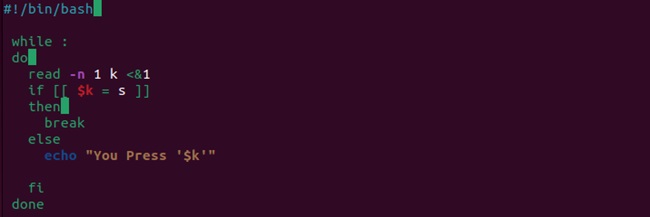A loop in programming is a control structure that allows a specific code to be executed repeatedly until a condition is met. This process is repeated until no further action is required. Loop allows you to repeat the desired set of instructions numerous times to attain the desired outcome. These recursions can be useful for all tasks that require repetitive operations or when working with data collections.
In this article, we will explore the meaning, types, and examples of loops, further gaining insight into how to use them correctly, enabling you to develop powerful, concise, and adaptable code. As we mentioned earlier, three types of loops are available in bash scripting. Let’s divide this section into multiple parts to explain each loop briefly.
For Loop in Bash
For loop is used to execute specific commands or codes for particular times. Here is the basic syntax of the for loop:
for var in list
do
commands
done
For example, let’s use the for loop to print a message for 10 times:
div>
<div style="text-align: justify">!#/bin/bash
for i in {1..10}; do
echo "Hello, World!"
done
 Once you execute the command, the system will print the message “Time for Linux” 10 times:
Once you execute the command, the system will print the message “Time for Linux” 10 times:
While Loop
You can use the while loop to execute the commands if a specific condition is true.
while [ condition ]
do
commands
done
For instance, let’s use the while loop, where the system will automatically exit whenever you press the S button on the keyboard:
#!/bin/bash
while :
do
read -n 1 k <&1
if [[ $k = S ]]
then
break
else
echo "You pressed '$k'"
fi
done

In the above script, K is the variable used for all the keys except the S. Moreover, the loop will break the condition after the entry of the S key:

Until Loop
The until loop is similar to the while loop, but it only continues if the specific condition is false and terminates when the condition is true.
until [ condition ]
do
commands
done
For example, you can use the until loop to reach a specific condition, so let’s create a script to print even numbers between o and 30.
#!/bin/bash
counter=0
until [ $counter -gt 30 ]; do
echo $counter
((counter+=2))
done

Once you run the script, the system will print all the even numbers until 30.

Wrapping Up
This was all about the simplest explanation behind bash script loops with examples. We have included multiple examples of various types of loops available in bash scripting. We recommend that you explore your creativity and skills to create amazing bash scripts around all the loops.
More...